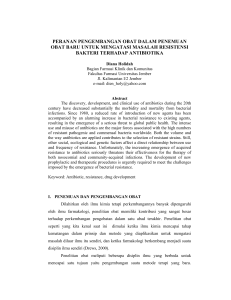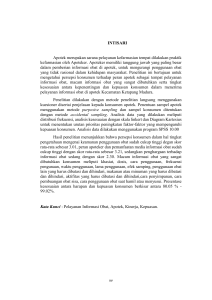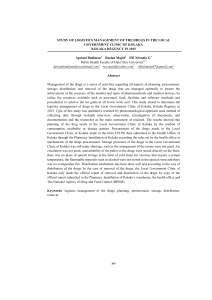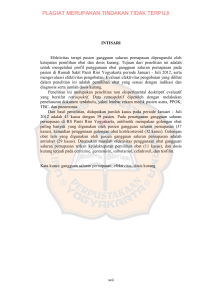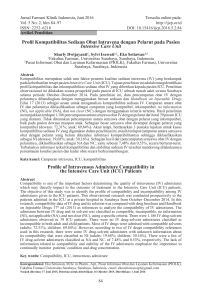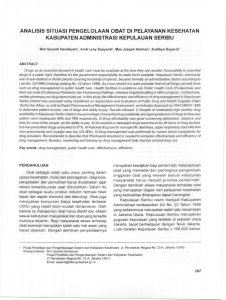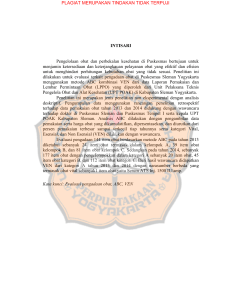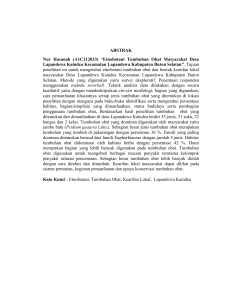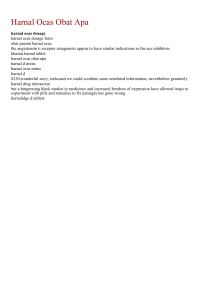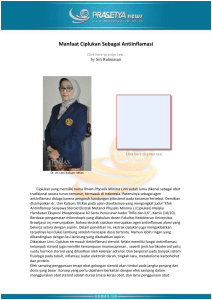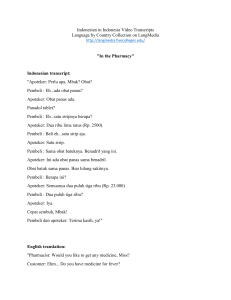INTISARI Penggunaan obat rasional didefinisikan sebagai
advertisement
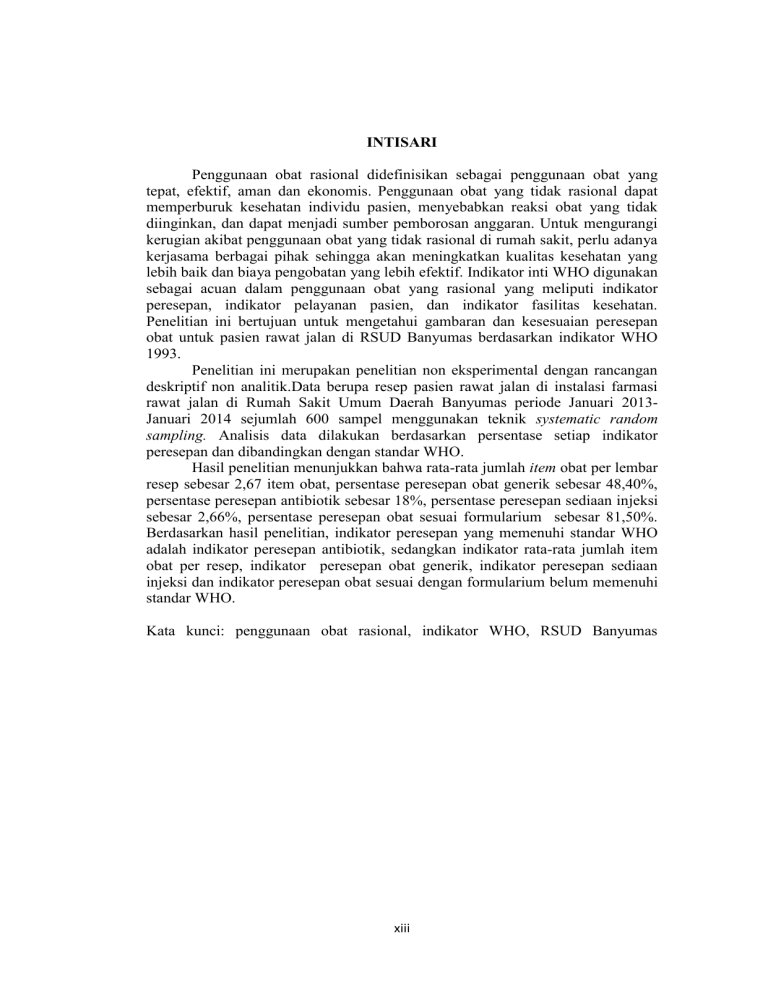
INTISARI Penggunaan obat rasional didefinisikan sebagai penggunaan obat yang tepat, efektif, aman dan ekonomis. Penggunaan obat yang tidak rasional dapat memperburuk kesehatan individu pasien, menyebabkan reaksi obat yang tidak diinginkan, dan dapat menjadi sumber pemborosan anggaran. Untuk mengurangi kerugian akibat penggunaan obat yang tidak rasional di rumah sakit, perlu adanya kerjasama berbagai pihak sehingga akan meningkatkan kualitas kesehatan yang lebih baik dan biaya pengobatan yang lebih efektif. Indikator inti WHO digunakan sebagai acuan dalam penggunaan obat yang rasional yang meliputi indikator peresepan, indikator pelayanan pasien, dan indikator fasilitas kesehatan. Penelitian ini bertujuan untuk mengetahui gambaran dan kesesuaian peresepan obat untuk pasien rawat jalan di RSUD Banyumas berdasarkan indikator WHO 1993. Penelitian ini merupakan penelitian non eksperimental dengan rancangan deskriptif non analitik.Data berupa resep pasien rawat jalan di instalasi farmasi rawat jalan di Rumah Sakit Umum Daerah Banyumas periode Januari 2013Januari 2014 sejumlah 600 sampel menggunakan teknik systematic random sampling. Analisis data dilakukan berdasarkan persentase setiap indikator peresepan dan dibandingkan dengan standar WHO. Hasil penelitian menunjukkan bahwa rata-rata jumlah item obat per lembar resep sebesar 2,67 item obat, persentase peresepan obat generik sebesar 48,40%, persentase peresepan antibiotik sebesar 18%, persentase peresepan sediaan injeksi sebesar 2,66%, persentase peresepan obat sesuai formularium sebesar 81,50%. Berdasarkan hasil penelitian, indikator peresepan yang memenuhi standar WHO adalah indikator peresepan antibiotik, sedangkan indikator rata-rata jumlah item obat per resep, indikator peresepan obat generik, indikator peresepan sediaan injeksi dan indikator peresepan obat sesuai dengan formularium belum memenuhi standar WHO. Kata kunci: penggunaan obat rasional, indikator WHO, RSUD Banyumas xiii ABSTRACT Rational drug use is defined as use of the right, effective, safe and economical. Irrational drug use can worsen the health of individual patients, leading to unwanted drug reactions, and can be a source of budget waste medicine. To reduce losses due to irrational use of medicines in hospitals, cooperation of various parties is needed to improve the quality of health and a more cost effective treatment. WHO core indicator is used as a reference in the rational use of medicines, which includes prescribing indicators, indicators of patient care, and indicators of health facilities. This study aims to describe and determine the suitability of prescribing for outpatients in RSUD Banyumas based on indicators of WHO 1993. Research study is a non-experimental with a descriptive non analytic design. Data was collected from outpatient prescriptions in the outpatient pharmacy at RSUD Banyumas period January 2013-January 2014 with a number of 600 samples using systematic random sampling technique. Data analysis was performed by calculating each prescribing indicator and comparing it with WHO standards. The results showed that the average number of drugs item per prescription was 2.67 items of drug, percentage of generic drugs prescribing was 48.40%, the percentage of antibiotic prescribing was 18%, the percentage of injection prescribing was 2.50%, and the percentage of drugs prescribing according to the formulary was 81.50%. Based on the results of the research, prescribing indicators that meet WHO was antibiotic prescribing indicator, while the indicator of average number of drug item per prescription, generic drug prescribing indicator, injection prescribing indicator and indicator of presribing in accordance to the formulary did not meet with the WHO standards. Keywords: rational use of drugs, WHO indicators, RSUD Banyumas xiv
